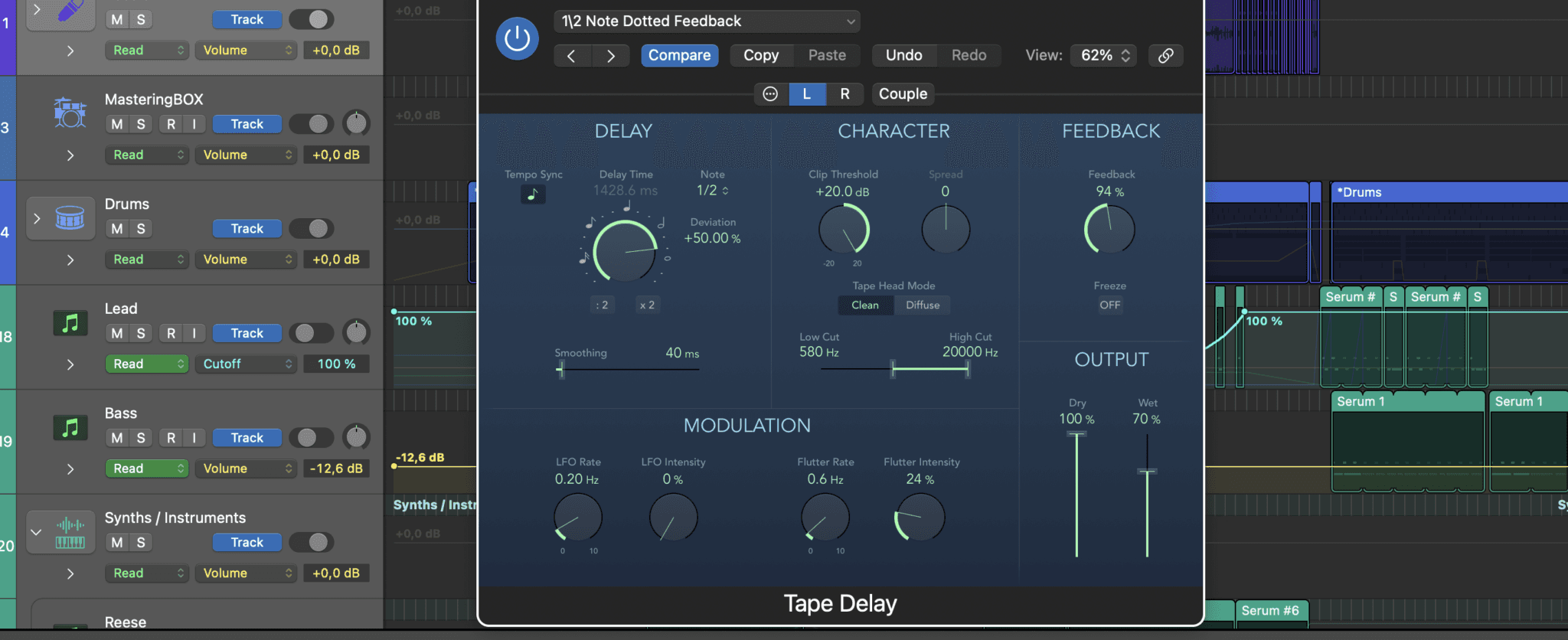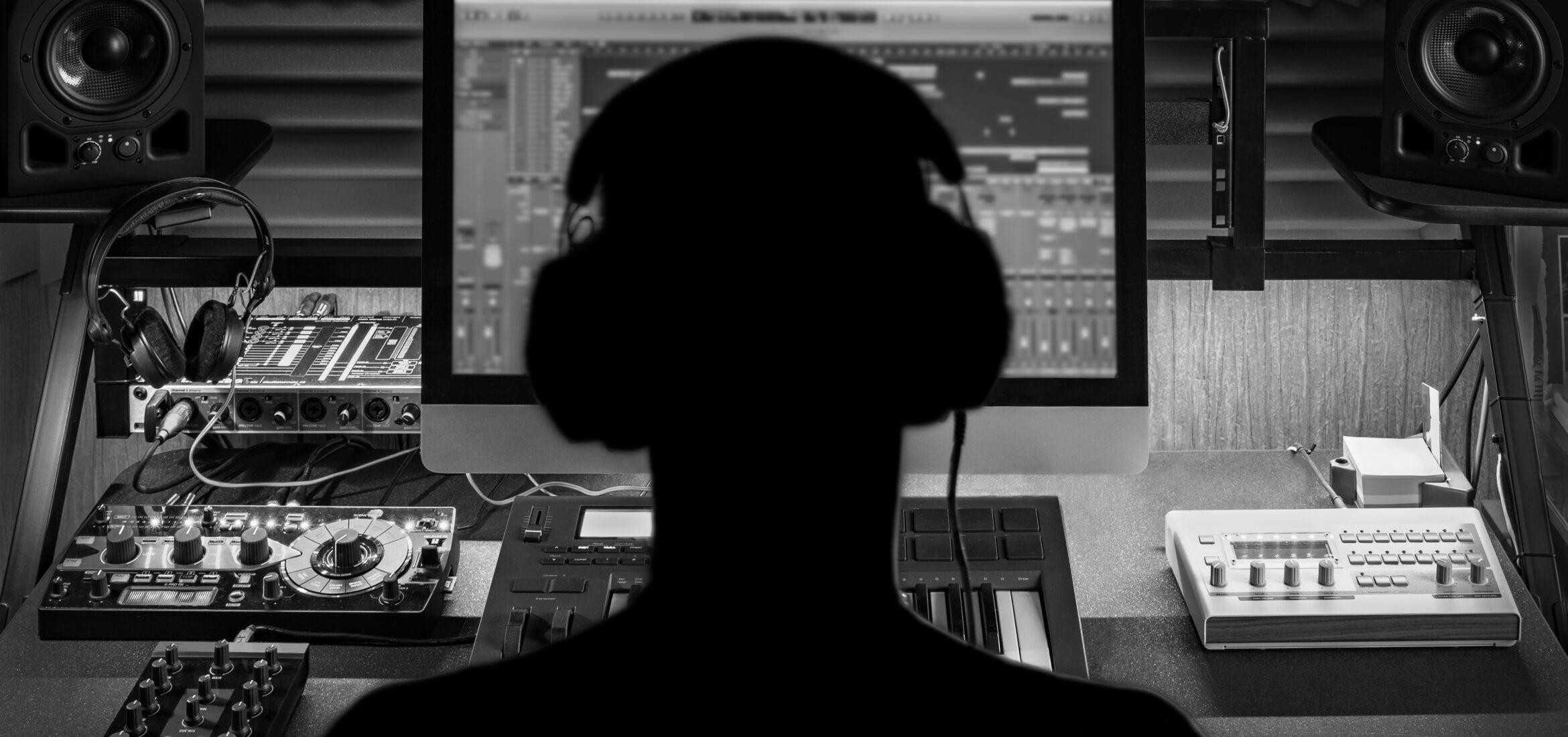Musicians and music fans alike know how much a good vocal line contributes to a song. Most pop songs these days focus primarily on vocal performance, letting the other instrumentation take a back seat for the most part. The vocals commonly carry the main melody of a song. Even artificially processed and tuned vocals have become integral instruments of their own in modern music genres. Mixing vocals properly can separate a decent song from a great one. One technique used in vocal mixing is doubling vocals. Here we’ll go over what doubling vocals means, how to do it, and why it’s effective.
What Is Vocal Doubling?
Doubling vocals is exactly what it sounds like: it’s the process of duplicating a vocal track. One vocal section is essentially turned into two, then both are combined manually or automatically. Much like doubling guitar tracks when mixing guitars, doubling vocals can enhance the overall vocal performance. This can be accomplished in a few different ways.

How to Double Vocals
You can approach the vocal doubling process in more than one way. Each method will produce a slightly different result, so which one you choose will depend on what kind of doubling you wish to achieve. The goal in all of these cases is to replicate the original vocal recording closely without making it a carbon copy. In other words, you want the doubled track to sound slightly different from the primary one. This thickens the entire vocal section and makes it more interesting. Two identical vocal tracks will merely increase the volume of the section.
1. Record Again
Recording another vocal track underneath the original is simultaneously the simplest and most challenging way to double vocals. It’s simple in terms of the process. All you need to do is record another version of the same vocal line. The difficulty of this method lies in human error.
Of course, some human error is desired here. Again, you don’t want an exact clone of the original vocal track. However, you also don’t want to stray too far. If the doubled track is too off the mark in pitch, tone, timing, or anything else, the double will hurt the mix, not enhance it. This is why it’s best to double as you go. The more closely together these are tracked, the more likely the doubled track will work. And, of course, it’s important to pan the original and double in opposite directions. Doubling vocals, like doubling guitars, works best when it utilizes the stereo field.
2. Automate the Process
If recording a double manually isn’t working out, there are other ways to go about it. One of them is called automatic double-tracking (ADT). This method only requires a single vocal track, though it results in an artificial vocal doubling effect. Ken Townsend, the recording engineer for the Beatles, developed a way to imitate manual vocal doubling in 1966 using tape delay.

In essence, ADT is just like using delay on any other instrument. Just as certain delay types like doubling echo serve to artificially double a guitar track, ADT takes the vocal input, plays it back, records this duplicate, then combines both tracks together. The duplicate will differ slightly in timing, decay, and placement, making the track more prominent and “wet.”
Of course, in Townsend’s time, this all had to be done in analog. Today, ADT is digital, though some engineers prefer the vintage authenticity of analog tape delay. In reality, the results are pretty much identical; however, digital ADT can be done with plugins found in most DAWs or with software like Reel ADT and KVR: ADT. Most of these plugins also have stereo effect options to broaden the vocal track across the left and right sides.
3. Modulate Pitch and Time
A third option for doubling vocals combines manual control with automation. This mixing technique will typically come after manually doubling a vocal track. Once again, the biggest issue with manual doubling is that humans don’t always produce the best second take. This human error can be amended or artificially created using the tools available in the DAW.
For instance, the pitch shift tool in the DAW can help separate a doubled track from the original. Of course, you only want to shift the pitch about four to eight cents to stay in key. This will naturally separate each vocal track just enough to make the double effect work. Adding a bit of delay on the duplicate track will enhance the effect even more. If a re-recorded track is slightly off in timing, this can be fixed by eliminating or expanding space in the region. A note that’s not held quite long enough can even be stretched to meet the original track’s length.
Why Doubling Vocals Can Be Effective
So now you have a basic understanding of vocal doubling and how to do it, but why does it matter? It’s true that not all songs utilize this mixing technique, though several do. Many of your favorite songs probably have doubled vocals. This technique simply transcends what a single vocal track can achieve. Human voices are limited and can easily be overwhelmed in a mix. With so much else going on in the mix (panned instruments, effects, etc.), doubling vocals allows the voice to stand out in a unique way and can add greater depth to your mix. The ear knows it’s not completely natural but appreciates the effect it produces.

Conclusion
Vocals aren’t objectively the most important aspect of a song, but they certainly make the deepest impression for most listeners. Doubling vocals can be a difficult process to master, especially without a consistent performer behind the mic. The vocalist must know how to keep time well and maintain a steady pitch throughout the session. Still, it’s good to at least try this technique on your own to get a feel for how it thickens a vocal track. Whether you double manually or with the help of automation, you’ll likely want to make this technique a mixing staple.
About the Author

Ethan Keeley
Writer, Voice Talent, Musician, and Audio EditorEthan Keeley is a musician, voiceover talent, and writer from Rochester, New York. When he's not on tour with his band Unwill he's working on new songs and stories.
Comments
Wow never new how do the doubles correctly thanks
Leave a comment
Log in to comment


